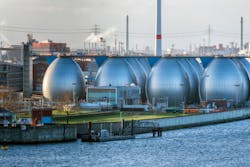New desalination process can generate electricity
SAARBRÜCKEN, Germany — Oct. 15, 2015 — Scientists in Germany are developing a new desalination method that needs no chemicals and is highly energy efficient, according to a press release.
The process, known as capacitive deionization (CDI), uses electrodes to extract ions from the water, resulting in clean water and ions that have been enriched on the electrodes, noted the release.
According to INM (the Leibniz Institute for New Materials), the process doesn’t just remove salts and heavy metals; it can also generate electricity from emissions present in the water as ions.
“Carbon dioxide, for example, is very well suited to this purpose,” said Volker Presser, head of the Energy Materials Group at INM, in the release.
“It is particularly exciting for us that, thanks to the electrosorption process, we can even convert waste heat into electricity,” Professor Presser added in the release.
CDI functions without chemical reactions thanks to ion-electrosorption: the water to be purified flows between two electrodes made of porous carbon to which a voltage is applied, explained the release. The positively charged electrode extracts ions which have a negative charge from the water and the negatively charged electrode, located opposite, extracts ions with a positive charge from the water.
The ions are stored in the nanopores of the electrode material and, at the end of the process, clean water flows out, stated the release. As well as desalination to produce potable water, CDI could be used to treat wastewater from mining operations, for example.
The ions or precious metals retained as a highly enriched fluid can be a valuable resource in industry, INM pointed out.
Click here to read the entire release.
